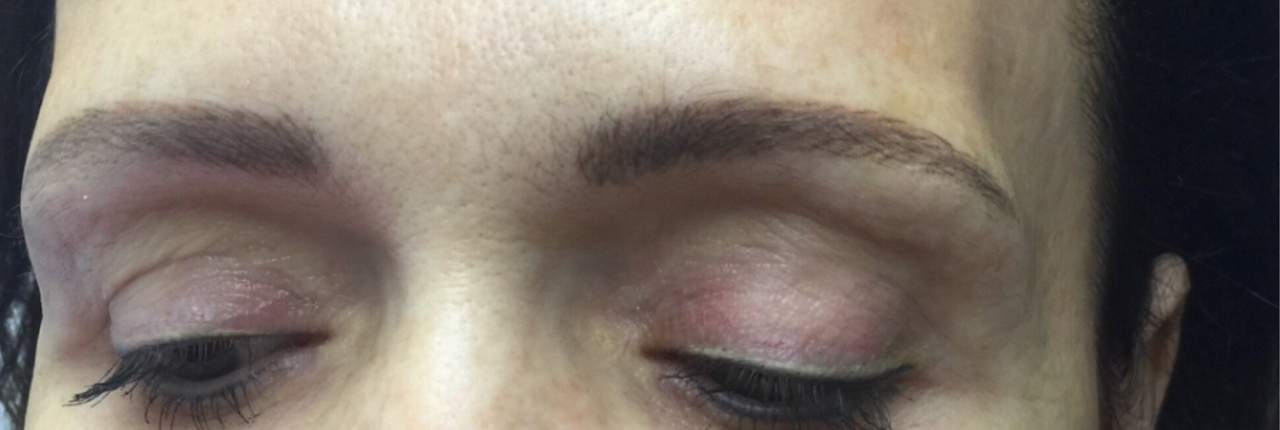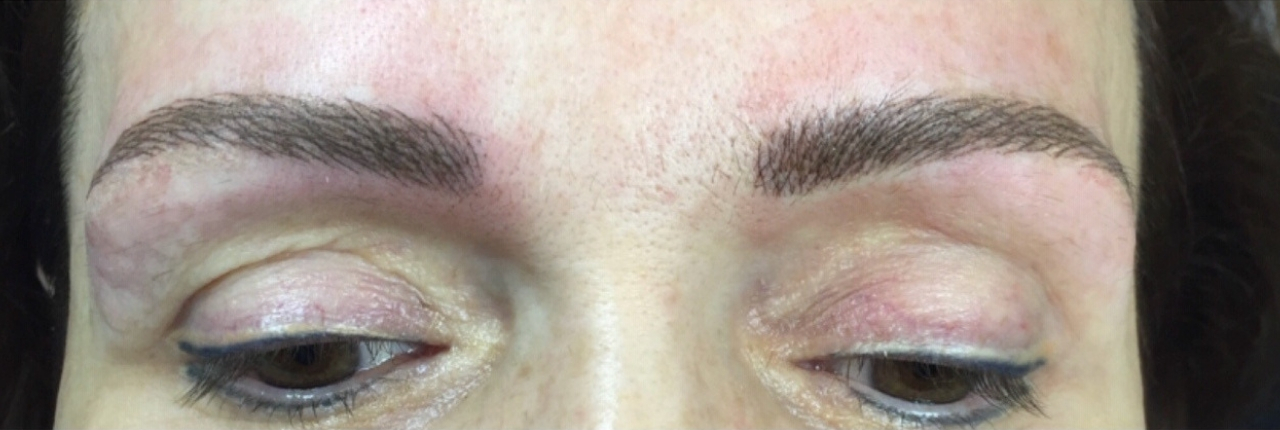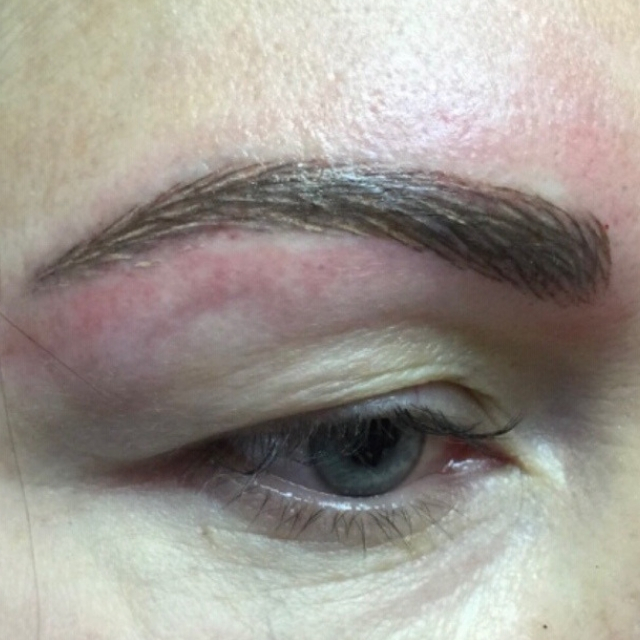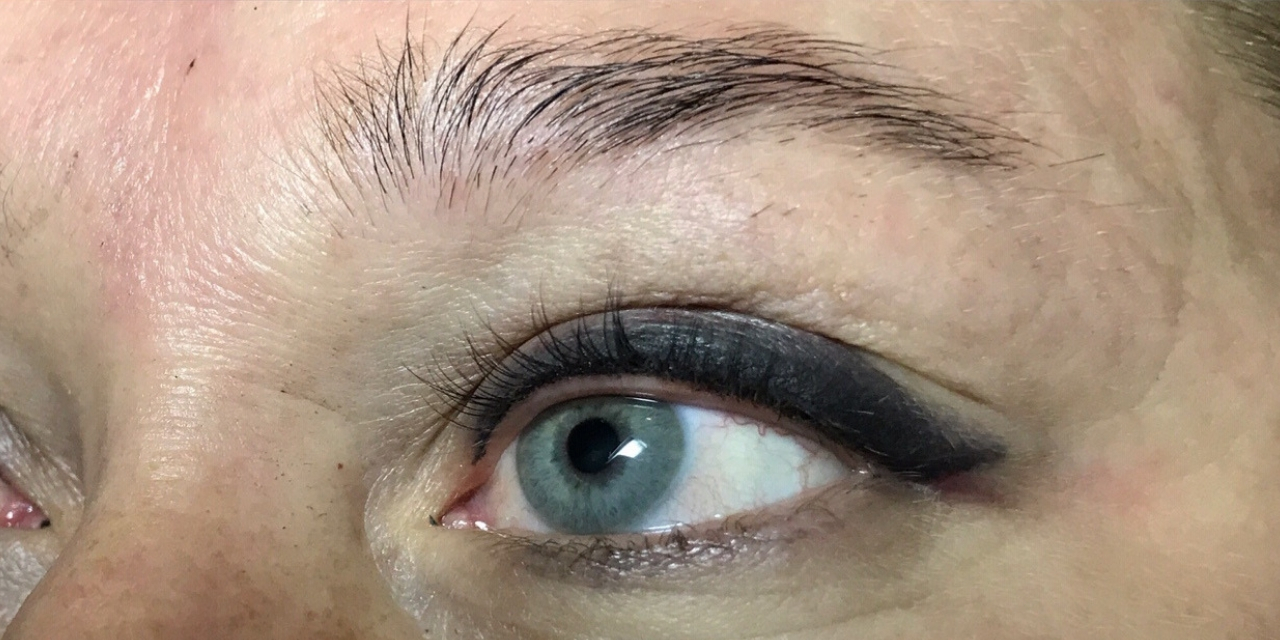Correction of permanent makeup: difficult, but possible
Poor quality permanent makeup is not a sentence

According to statistics, 70% of permanent makeup procedures are a correction of what has already been done. The reasons for this are many. But, unfortunately, most of the procedures for correcting PM are dictated by completely harmless motives.
Anna Zabolotnaya , Head of the International Academy of PM and Aesthetic Dermopigmentation "Biotek" (Russia), certified artist, international class master teacher in permanent make-up, aesthetic dermopigmentation and trichopigmentation, winner of the first Contour of the Century competition (2003), judge of permanent make-up championships in Russia and abroad, lecturer at the International University of PM (Milan, Italy) (Russia)
The topic of permanent makeup correction is very important and in demand. Permanent makeup does not last forever - and even the highest quality work will eventually require updating. In addition, permanent makeup, like everything else in the beauty industry, is influenced by fashion. What was relevant last season may lose its appeal even before the applied pattern disappears naturally. There are other completely harmless reasons why a client turns to the PM master for the correction of a particular work. But, unfortunately, most of the procedures for correcting PM are dictated by much less natural and harmless motives. The main problem with which clients come for correction is poor-quality PM. I have repeatedly raised the topic of low qualification of masters. Irresponsible specialists, at best with basic knowledge and no experience, offer their services, bribing customers with a low price. And here, indeed! - the miser pays twice, and sometimes even three times: I have been approached more than once by people who, having received a poor-quality service, did not draw the proper conclusions and turned to the same unskilled, but cheap specialists for correction. I know from experience that fixing a bad fix is the hardest thing to do.
"Pigmented" surprises
Recently, another problem has been added to the problem of low qualification of PM specialists - low-quality pigments. Trying to save money on pigments and mixes of unknown manufacturers, and often made in a handicraft way, customers end up with a whole range of surprises, which become more and more over time. But the worst thing is that artisanal pigments can behave in the most unpredictable way during the correction. When trying to paint over or remove the applied PM using laser correction, such pigments often not only do not go anywhere, but, on the contrary, become brighter and acquire almost acidic colors. A simple calculation shows that the cost of a quality PM procedure by a qualified master is comparable to the amount of money that a client can spend on the corresponding cosmetic procedures during the year. That is, for the same period for which the PM is guaranteed to eliminate the need for these same procedures. Correcting is always more difficult than creating. If in the second case the possibilities of a specialist are not limited by anything other than his imagination and skill, then in the case when it comes to correction, he is forced to move in a narrow fairway laid before him, and laid poorly.
The task of correcting PM is often complicated when the skin in this place is excised or has other traces of traumatic impact. For example, as a result of multiple corrections or after a poor-quality microblading procedure. However, it must be said that absolutely catastrophic consequences as a result of the microblading procedure are becoming less and less common. In the list of cases that are difficult to fix, I would single out a situation where the pigment cannot be painted over because it is too deep. This happens for various reasons and not necessarily due to poor-quality introduction, although this also happens. But most often, such a “fatal” PM occurs due to repeated and long-term repetition of the same procedure, especially on aging skin. You can fix such a PM only by creating a new one based on the existing one. And for this it is necessary to use not only all the richness of the palette we have, but also the imagination of the artist.
A good pigment has the following mandatory properties:
- Does not contain toxic and carcinogenic components
- Has a normal pH (in accordance with physiological norms)
- Insoluble in water and dye base components
- It has the same and rather small size of microparticles. When dried, it forms a homogeneous, even surface, without lumps.
- Resistant to UV rays
- Excreted from the skin evenly
Look at the root
Before proceeding with the procedure for correcting the PM, it is necessary to carry out serious preparatory work, namely, to establish the cause of the problem. What is this? Low qualification of the master, low-quality pigment, peculiarities of the client's skin? The more complete the collected material, the more obvious the direction in which to move. In addition to information about the problem, you need to study the properties of the client's skin, its age, thickness, phototype. We must not forget about the features associated with the area requiring intervention. What is acceptable for the eyebrow area is not suitable for the eyelids. And what is appropriate for the lips can not always be applied on the cheeks. This concerns not only the choice of pigment, which, of course, is obvious, since we are talking about zones of different colors, but also the choice of technique, basic movements, their intensity, etc. Not the least role in choosing a correction method is played by the wishes of the client. Especially if your qualifications allow you to implement them, despite the complexity of the initial conditions.
The correction procedure always takes place in many stages and takes a long time. The more complex the correction task, the more time it takes and the more stages it includes. Each subsequent stage corrects the work done in the previous one, especially if the chosen method did not bring the desired result, and this also happens, and at the next stage one has to literally invent a new method, a new technique. In addition, when correcting, we use highly diluted pigment and apply it in layers, which, of course, increases the duration of the procedure and increases the number of stages. In general, any correction is a very delicate and creative work. Only a very experienced specialist using high-quality pigments and equipment can carry out a high-quality procedure. By the way, with regard to special corrective pigments, the colors needed for correction are produced by only a few large companies, because skin tones are not popular and are practically not used for classic PM, so it is simply unprofitable for small companies to produce them. But it is not enough just to have the necessary colors in the palette - the master must be able to use them.
It is very important here not only to understand the features of the skin and correctly determine its phototype, but first of all to have a clear idea of what skin color is. After all, as we know, skin color consists of many different shades, sometimes even unexpected ones, such as blue or olive, the predominance of which determines the skin phototype. Even among representatives of the European race, the complexion and body color varies from yellow to red and blue shades. The tones of the face and body depend on the intensity of the lighting, the ethnicity of the person and other factors. In order to work with all the variety of shades of human skin, you will have to resort to a rich palette of pigments.
Color temperature plays an important role in visual perception. Warm colors should appear colder in dark areas, and vice versa. The task of the master is to learn to see. Looking at a person's face, you can notice unexpected greenish and purple tones in the shadow areas.
However, any complex task, including the correction of PM, cannot be solved with the help of one technique - whether it is the correct selection of colors, the choice of the shape of the masking pattern, or the use of any one pigment application technique. A complex task requires a comprehensive solution through a combination of all the means and knowledge of the master and the continuous creative experiment carried out on their basis.
The material was first published in Permanent No. 1(13)/2019
Read also
- Skin properties and color types, or why color is so important in a permanent
- "Pitfalls" of PM and how to avoid them for a novice master
- The cost of the service, or How to determine the price of permanent makeup
- Oily skin and permanent makeup: acceptable techniques
- Permanent Makeup Removal: When is a laser preferred?
- Complex permanent make-up: master's difficulties and client's fears
- Shot
- Permanent makeup













